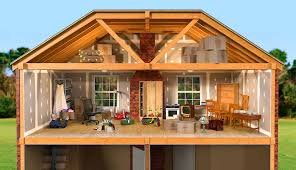In this part, we’ll take a look at the commercial filtration system for water in general. It provides some essential information you’ll need before purchasing and installing a system to purify water for drinking at home, and it explains the various filters and technologies used for this purpose. A water filtration system is the only way to guarantee that everyone in a household always has access to clean, safe drinking water. A water filtration system is similar to a power surge protector in that it protects against harmful spikes in electricity usage, and in both cases the user is guaranteed the highest possible quality of the resource in question. A water filtration system is similar to a power surge protector in that it protects the water supply from harmful contaminants.
Freestanding dispenser
The filtration system may consist solely of a freestanding dispenser; it may be a filter attached to the tap; or it may be one of the more complex systems that serves multiple buildings, neighborhoods, or even an entire city. There are a variety of issues that can emerge in municipal and private plumbing systems, including pipe breaks, leaks, and industrial contamination. Toxic substances and other contaminants may enter the water supply through plumbing’s many entry points. Organic pollutants like pathogenic parasites and heavy metals like giardiasis, cyclosporiasis, and microsporidiosis are just as dangerous to human health as their chemical counterparts. There are many other kinds of pollutants, not only chemical ones.
That half of all hospitalisations on Earth can be attributed to water contamination by chemicals and microorganisms that may survive in water is not surprising. You should reevaluate the safety of your home’s water supply in light of this data, and consider taking preventative actions to protect your family’s health. Understanding the obstacles that must be overcome prior to implementing water filtration systems is the first step. To find the right water filtration system to fit your needs and your budget, you should first do a study of your water supply to determine which contaminants the system is most suited to handle. If you get your H2O from a well or a borehole in the ground, the most likely pathogens you’ll come into touch with are Giardia and Microsporidia.
Iron contamination of the water table and plumbing in your home is a real threat
Pipe leaks, contaminated ground water, and subpar water treatment all contribute to an increase in giardiasis in municipal water supplies; too much chlorine or chloramine in the water can also cause problems. It’s likely that issues unrelated to the toxins are being caused by the pH levels in your water supply. This pertains to the water’s acidity or alkalinity, which can be harmful to both you and your plumbing if present in high enough concentrations (when the water is either too acidic or too basic, respectively).
Steam distillation, despite being costly and energy-intensive, is a highly successful method of purification, whereas carbon filtration systems are good at eliminating organic contaminants. Reverse osmosis does a great job with properly-pumped water as well as with salty water. On the other hand, combining them has the potential to greatly improve the quality of your home’s drinking water.









